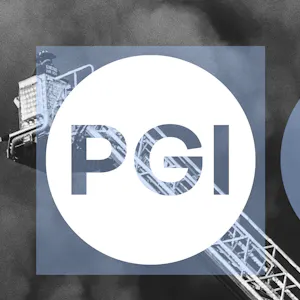Emerging threats

We support organisations striving to build a trustworthy, safe online environment where users can engage authentically in their communities.
Cross-sector corporatesWe support international government organisations and NGOs working to provide infrastructure or improve the capabilities, security and resilience of their nation.
International programmes and developmentWe support commercial organisations operating in a digital world, seeking to protect their reputation and prevent business disruption caused by cyber attacks and compliance breaches.
UK government and public sectorWe support UK government organisations responsible for safeguarding critical infrastructure, preserving public trust, and maintaining national security.



Navigating the complexities of PCI DSS compliance can be challenging, especially when it comes to understanding the role of Third Party Service Providers (TPSPs). We spoke to our PCI DSS experts to clarify what a TPSP is and their requirements under PCI DSS.
Companies that are in-scope for PCI DSS compliance can be categorised as Merchants and Service Providers.
Merchants: These are businesses that accept payment cards bearing the logo of payment brands, such as Visa and Mastercard, as a method of payment for goods and services provided.
Service Providers (TPSPs): These support and provide a service to other Merchants which has an impact on their payment card data security.
However, the same company can actually be both if they fulfil both functions. An example might be a Data Centre hosting a customer’s IT environment. The customer may be including cardholder data in these systems so from a hosting perspective the Data Centre company are a TPSP. They may also be a merchant if they accept card payments for their hosting services.
Read more: PCI DSS: A terminology and acronym minefield
When carrying out PCI DSS assessments, our QSAs frequently navigate through a range of client misinterpretations and uncertainty on the subject of TPSPs.
This is often centred around the requirements in 12.8 which are all about managing the Merchant / TPSP business relationships. For example, 12.8.4 stipulates that a process must be in place to monitor the PCI DSS compliance status of each in-scope service provider on at least an annual basis. However, many TPSPs mistakenly believe that if they don’t directly handle cardholder data, they don’t need to comply with PCI DSS.
A typical response from in-scope TPSPs which are not an obvious payment gateway provider is “we don’t handle cardholder data, so we don’t need to be included in this” and “we are not a PCI DSS service provider”.
This is directly at odds with the guidance provided by the PCI Security Standards Council (SSC). So, what is the real story?
There is a very useful Glossary of Terms included in the PCI DSS standard itself as well as information supplements such as Third-Party Security Assurance available in the SSC’s online Document Library. Here, it states that TPSPs aren’t just companies that process, store, or transmit cardholder data. They also include companies that provide services that could control or impact the security of cardholder data.
Some examples of TPSPs (not intended to be an all-inclusive list) are:
It is worth noting that an Acquirer bank is normally not considered to be a service provider for the purposes of Requirements 12.8. Also, where a Telecomms company is providing a communications link, or an Internet Service Provider is providing a ‘pipe’ for internet access, these type of companies are not considered to be a PCI DSS service provider.
Understanding and managing TPSP compliance can be tricky. That’s where our PCI DSS experts come in. We can help you establish best practice processes for TPSP compliance and assess your TPSP 12.8 requirements as part of a broader PCI DSS gap analysis.
By clearly understanding the role of TPSPs and their compliance requirements, you can ensure better security for your payment card data and maintain PCI DSS compliance more effectively. Get in touch to discuss how we can make your PCI DSS compliance easier.

Last week, the WeProtect Global Alliance launched their flagship biennial report, the Global Threat Assessment 2025 (GTA25).

PGI has officially been recognised as an Assured Cyber Advisor by the UK’s most trusted cyber security body, the National Cyber Security Centre (NCSC).

“The question is not whether AI will influence international peace and security, but how we will shape that influence.